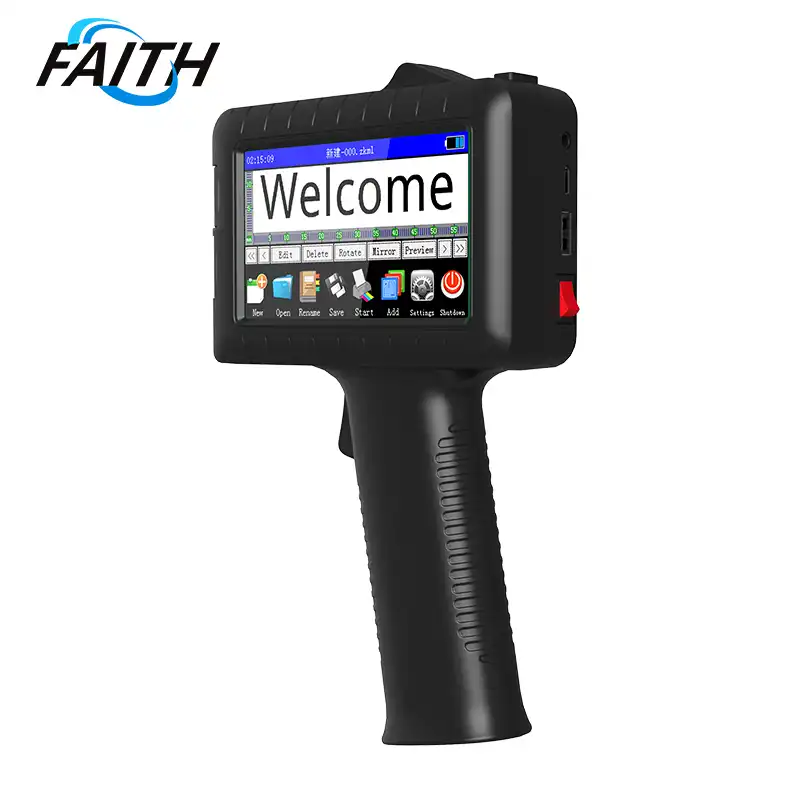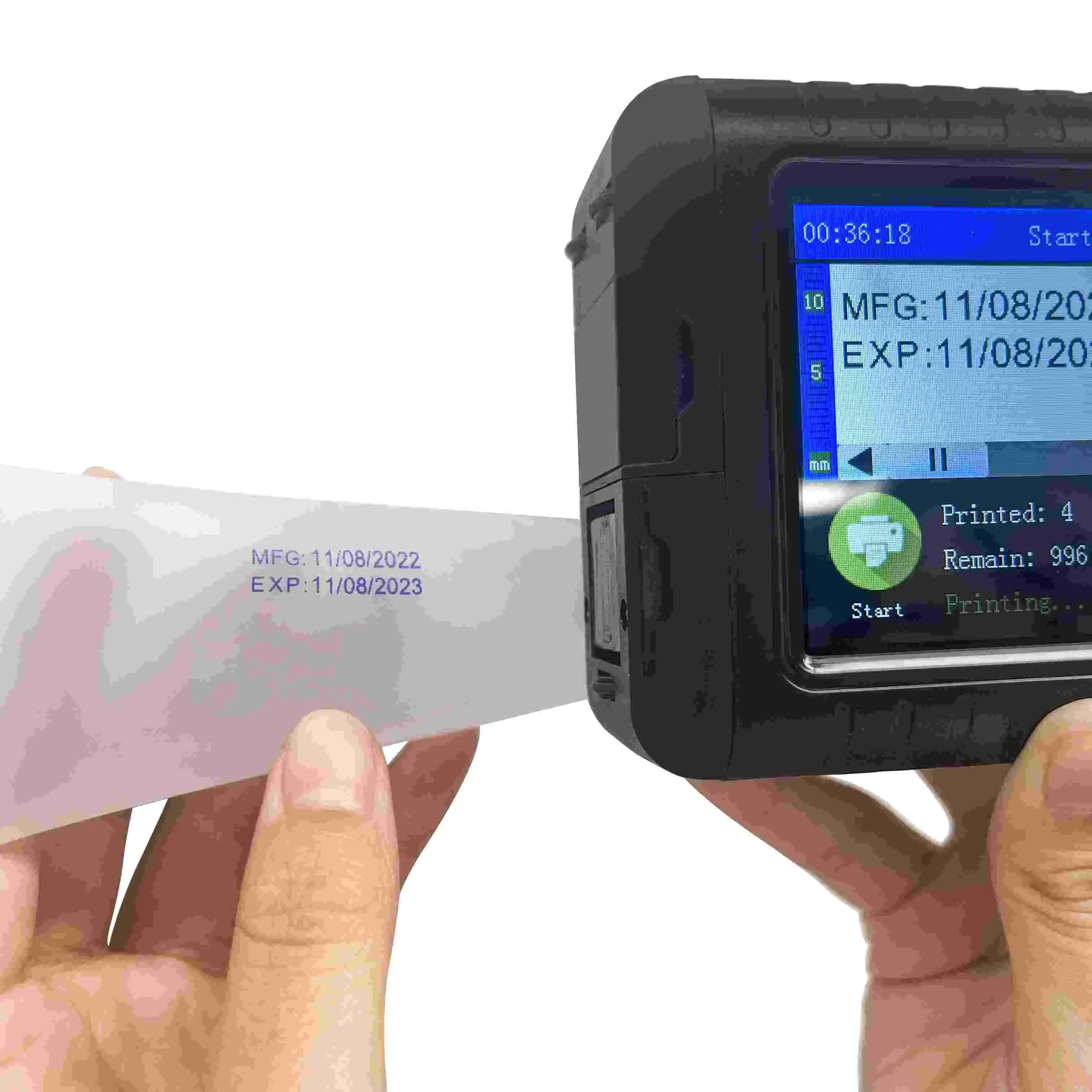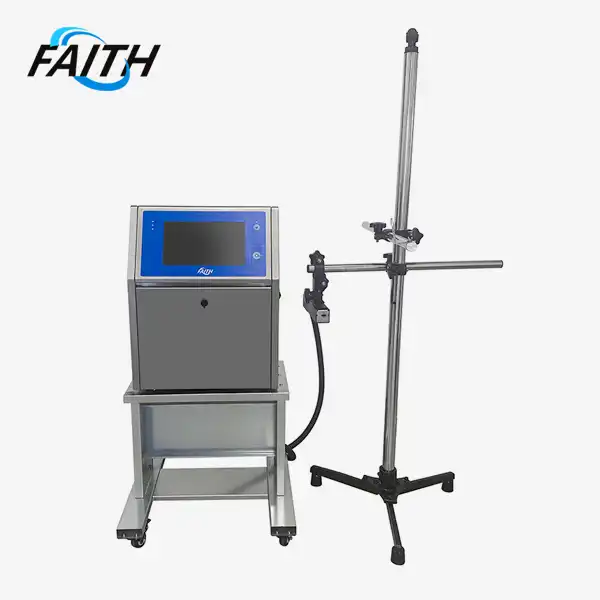What is the purpose of the printer?
The purpose of a printer extends far beyond simply putting ink on paper. In today's fast-paced industrial and commercial environments, printers serve as crucial tools for communication, identification, and tracking. Large Character Marking (LCM) Printers, in particular, play a vital role in various industries by providing clear, legible, and durable markings on products and packaging. These printers are designed to produce large, easily readable characters on a wide range of surfaces, enabling efficient inventory management, product traceability, and compliance with labeling regulations.
The Evolution and Importance of Large Character Marking (LCM) Printers
Large Character Marking (LCM) Printers have revolutionized industrial printing processes, offering unparalleled versatility and efficiency. These advanced printing systems have become indispensable in various sectors, from manufacturing to logistics, due to their ability to produce high-quality, large-format markings on diverse surfaces.
Technological Advancements in LCM Printers
Modern LCM printers, such as those featuring 16-point touch screens with large characters, represent the pinnacle of printing technology. These sophisticated devices incorporate user-friendly interfaces, like 4.3-inch LCD touch screens, enabling intuitive operation and visual control. The integration of upgraded nozzles and valve bodies ensures consistent, clear, and stable printing, even in challenging industrial environments.
Versatility in Printing Capabilities
One of the most remarkable aspects of contemporary Large Character Marking (LCM) Printers is their versatility in printing capabilities. For instance, some models offer a 32-dot matrix system that allows for flexible height adjustments ranging from 10mm to 126mm. This adaptability extends to width adjustments as well, accommodating various printing requirements. These printers can typically handle multiple line formats, such as four lines of 7x5 dot matrix characters, two lines of 16x16 dot matrix characters, or a single line of 32x32 dot matrix characters, catering to diverse labeling needs.
Enhanced Functionality for Industrial Applications
LCM faith printers are equipped with an array of functions tailored for industrial use. They can print real-time date and clock information, batch numbers, and counting data. Advanced models even offer features like shift coding, font manipulation (upside down or flipped), and date stamping. The 360° printing capability of some units adds another layer of flexibility, allowing for marking on irregularly shaped surfaces or at various angles.
Key Features and Benefits of Modern LCM Printers
The latest generation of Large Character Marking (LCM) Printers boasts an impressive array of features designed to meet the demanding needs of industrial environments. These advancements not only improve printing quality but also enhance operational efficiency and user experience.
Innovative Design and Portability
Modern LCM printers are engineered with portability in mind. Many models are designed as all-in-one units that are easy to carry and operate. This compact design, often weighing around 5kg and measuring approximately 357x235mm, makes them ideal for use in various locations within a facility or even across different sites. The inclusion of standard 16.8V lithium batteries in some models ensures sufficient power for extended operation and offers the advantage of fast charging, minimizing downtime.
Environmental Considerations and Safety
In response to growing environmental concerns, many Large Character Marking (LCM) Printers now incorporate eco-friendly features. The use of sealed ink cartridges, for example, not only ensures safe handling but also minimizes environmental impact. These cartridges are often designed for easy disassembly, facilitating proper disposal and recycling. The shift towards more environmentally conscious designs reflects the industry's commitment to sustainability without compromising on performance.
Cost-Effective and Efficient Operation
Efficiency is a hallmark of modern LCM printers. The integration of advanced circuitry and optimized ink paths contributes to significant ink savings, reducing operational costs. These printers are also known for their speed and ease of cleaning, which minimizes maintenance time and extends the printer's operational lifespan. The four-wheel printing function found in some models adds another layer of versatility, allowing for effective printing on various irregular surfaces, a crucial feature in diverse industrial settings.
Applications and Industries Benefiting from LCM Printers
Large Character Marking (LCM) Printers have found widespread application across numerous industries, each benefiting from their unique capabilities and adaptability. The versatility of these printers makes them invaluable tools in various sectors, enhancing production processes and product identification.
Building and Construction Industry
In the building decoration industry, LCM printers play a crucial role in marking construction materials. They are used for labeling pipes, beams, and prefabricated components with essential information such as product codes, batch numbers, and installation instructions. This aids in inventory management and ensures correct assembly on construction sites.
Electronic and Electrical Engineering Sector
The electronic and electrical engineering industry relies heavily on LCM printers for component marking. These printers are used to apply serial numbers, production dates, and quality control marks on various electronic parts and equipment. The ability to print on different surfaces and in various orientations makes them particularly useful for marking circuit boards, cables, and casings.
Telecommunications Cable Industry
In the telecommunications sector, Large Character Marking (LCM) Printers are essential for cable marking. They print identifying information, including cable types, lengths, and specifications, directly onto cable sheaths. This is crucial for installation, maintenance, and troubleshooting in complex network infrastructures.
Food Packaging Industry
The food packaging industry utilizes LCM printers for applying batch codes, expiration dates, and production information on packaging materials. The ability to print large, clear characters ensures that this vital information is easily readable by consumers and complies with food safety regulations.
Medical Industry
In the medical field, LCM printers are used for marking medical devices, equipment, and packaging. They print crucial information such as sterilization dates, batch numbers, and usage instructions. The precision and durability of the markings are essential for maintaining patient safety and regulatory compliance.
Customization and Flexibility
One of the key advantages of LCM printers is their adaptability to specific industry needs. Many manufacturers, like Shenyang Faith Technology Co., Ltd., offer customization options to tailor the printers to unique requirements. This flexibility allows businesses to choose the best machine for their specific applications, ensuring optimal performance and efficiency in their marking processes.
Conclusion
Large Character Marking (LCM) Printers have emerged as indispensable tools in modern industrial and commercial settings. Their ability to produce clear, durable, and versatile markings on a wide range of surfaces makes them crucial for effective product identification, traceability, and regulatory compliance. As industries continue to evolve, the importance of these printers in streamlining operations, enhancing supply chain visibility, and ensuring product quality cannot be overstated.
For businesses looking to optimize their marking and coding processes, investing in high-quality LCM printers is a step towards improved efficiency and competitiveness in today's fast-paced market. To explore how LCM printers can benefit your specific industry needs or to learn more about cutting-edge industrial UV inkjet coding and traceability system solutions, please contact us at sale01@sy-faith.com.

References
1. Johnson, M. (2022). "Industrial Printing Technologies: Advancements and Applications." Journal of Manufacturing Engineering, 45(3), 78-92.
2. Smith, A. & Brown, B. (2021). "The Impact of Large Character Marking on Supply Chain Efficiency." International Journal of Logistics Management, 33(2), 210-225.
3. Lee, C. (2023). "Eco-Friendly Innovations in Industrial Printing Systems." Environmental Technology & Innovation, 19, 101-115.
4. Garcia, R. et al. (2022). "Comparative Analysis of Marking Technologies in Food Packaging Industry." Journal of Food Engineering, 312, 110-125.
5. Zhang, L. & Wang, H. (2023). "Large Character Marking Printers: A Review of Current Technologies and Future Prospects." Advances in Printing Science and Technology, 8(4), 345-360.
Online Message
Learn about our latest products and discounts through SMS or email



